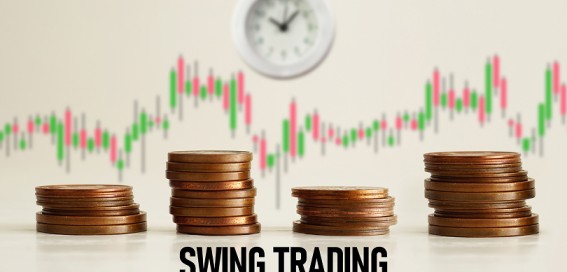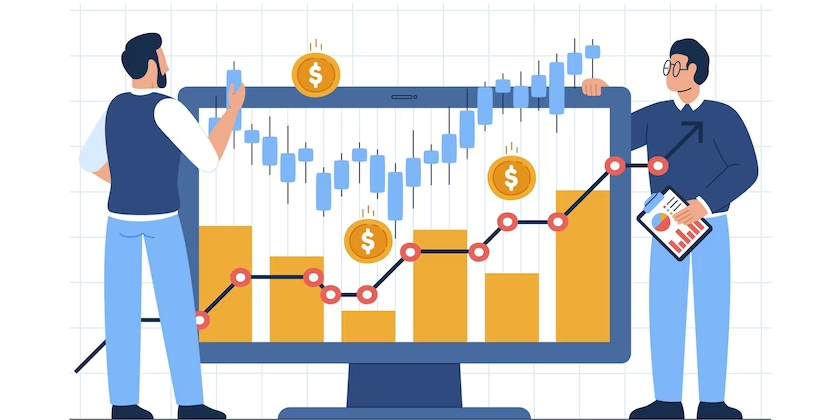Trading success depends greatly on the ability of traders to base their choices on data analysis and market trends. Emotional biases are one of the primary challenges traders face in achieving success in the market. Traders experience judgment impairment that triggers impulsive behaviours that break their trading strategy. People who want to succeed in financial markets must learn to remove emotional bias from their decisions. The following article demonstrates how traders can control their emotional responses, identifies specific trading biases and offers daily strategies for maintaining emotional balance to attain long-term trading success.
The Importance of Emotional Control in Trading
Real emotional control in trading goes beyond staying outwardly calm during trades, it requires traders to maintain discipline and make objective choices while honouring the features of their trading plan. The absence of emotional control leads traders into hasty actions that disregard their strategies while subjecting their choices to brief emotions of fear, greed, and frustration. Emotional interference in trading activities will eventually block businesses from achieving maximum market success.
Finance market traders confront exceptional difficulty in controlling their emotions because market conditions execute volatile shifts unpredictably. The unpredictable market behaviour creates unpredictable shifts that generate emotions, including stress and anxiety, as well as excitement among traders. Poor trading decisions emerge from emotional influence, which causes investors to either close positions early from anxiety or keep losing trades longer out of being hopeful or following profits beyond proper boundaries.
Begin your investing journey today. Your Demat account is the first step.
Common Trading Biases and How They Impact Decision-Making
In the fast-moving world of trading, many people unknowingly fall victim to emotional biases that distort their decision-making. Recognising these emotional biases is the first step in overcoming them. Here are some of the most common emotional biases that traders experience:
Loss Aversion
Loss aversion is a cognitive bias demonstrating how people fear losses more than they value gains. A trader with loss aversion may hold onto a losing trade, hoping it will recover, even when all the signs say it’s time to exit. This could lead one to remain in the trade longer and lose more for various reasons or miss the opportunity to exit the losing trade and preserve capital.
Confirmation Bias
Confirmation bias describes traders looking for information or interpreting data supporting their prior positions. This can lead traders to overlook information that signals the market is moving against them and to make poor decisions or miss the opportunity to adjust their strategy when market conditions change.
Overconfidence Bias
Overconfidence bias occurs when traders believe they have an unusual degree of control or understanding compared to what they do. This results in increased risk-taking, as traders are likely to underweight risks involved in a trade or disregard important signals that suggest they should be cautious. Overconfidence will also impede traders’ ability to learn from their errors, negatively affecting their processes for improving trading skills.
Herd Mentality
Herd mentality is when traders follow the crowd without doing their analysis. If traders have a strong positive or negative market sentiment, they might jump into positions without vetting the substance of that sentiment and whether it applies to their situation. They will end up, at times, buying at the top and selling at the bottom, and that will severely hinder or erase their chances of profitability.
Recency Bias
Recency bias occurs when traders place too much emphasis on recent actions and ignore longer-term trends. For instance, if a trader just had a winning streak, they may get overly confident in their ability to continue winning. Conversely, if the trader had a string of losing trades, they may get overly cautious and miss out on opportunities.
Anchoring Bias
Anchoring bias is when traders fixate on the first piece of information they receive, such as an initial price or a price trend. In doing this, they may ignore new data that could change the circumstances of the market, leading to poor trading decisions and missed opportunities.
Trading Discipline Techniques for Overcoming Emotional Biases
To manage emotions and improve discipline in trading, consider implementing these effective strategies:
- Create a Trading Plan: A solid plan with parameters, such as risk management, entry/exit points, and position sizes, helps reduce emotional ambiguity. Write down how you will react to your emotions, like setting stop-loss orders to prevent panic.
- Use Stop-Loss and Take-Profit Orders: These tools will automatically exit your trades if the prices advance to pre-specified levels – eliminating much of the emotion that comes with decision-making. The stop-loss limits your losses, while the take-profit prevents you from riding a trade until the price drops significantly, creating a decision driven by greed.
- Limit Exposure: Reducing emotional engagement begins with lowering the dollar amount in each trade relative to your total capital. Remember, to reduce the emotional impact, you can diversify your portfolio to spread your exposure across multiple trades and avoid becoming emotionally attached to any one trade.
- Think Long-Term: Avoid focusing too closely on short-term price changes. Taking the long view helps maintain discipline and avoid emotionally driven decisions during volatile market periods.
- Keep a Trading Journal: Take the time to review your journal frequently to recognise the signs and patterns of emotional decision-making. Understanding this will help you develop routines for your trading mentality and control your emotions.
- Practice Mindfulness: Mindfulness techniques, such as meditation or deep breathing, will help you alleviate stress and remain calm and focused regardless of the volatility of the markets.
How to Control Emotions in Trading: A Step-by-Step Approach
To control your emotions in trading, follow these steps:
- Recognise Your Feelings: When you experience fear, greed, or frustration, identify what you are feeling. Recognising your feelings is the first step in processing them.
- Stick to Your Plan: Trading plans are important when dealing with high-stress emotions. Trust the process, and don’t act impulsively.
- Take Breaks: Step away from the screen if you feel overwhelmed. A short break can help you reset and bring clarity. If you know other traders or a mentor to talk to, consider doing that to help you have an objective, rational frame of reference.
Conclusion
Overcoming emotional biases in trading is essential for achieving long-term success in the financial markets. You can improve your chances of making rational, informed decisions by developing emotional control, recognising common trading biases, and implementing effective trading discipline techniques. Remember, trading is a journey, and managing your emotions is key.
If you’re looking for a reliable platform to apply these techniques, Religare Broking offers a range of tools and resources to help you stay disciplined and make informed trading decisions. Sign up today and start your journey towards disciplined trading.












